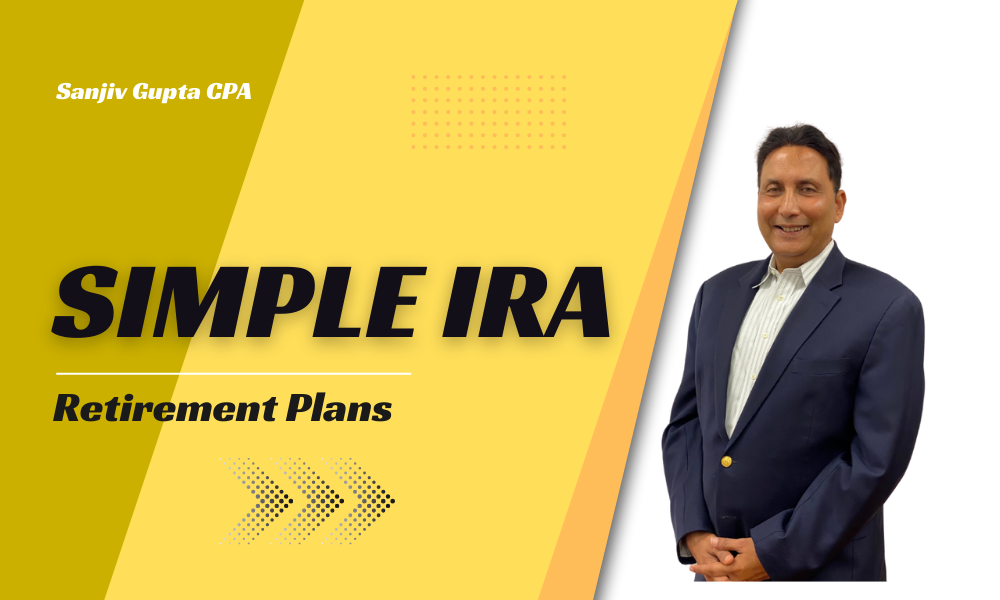
Savings Incentive Match Plan for Employees Individual Retirement Arrangements
Qualified plans, often referred to as "qualified retirement plans," typically include 401(k) plans, 403(b) plans, and defined benefit pension plans. These plans must meet specific requirements under the Internal Revenue Code to qualify for certain tax benefits and protections.
SEP IRAs (Simplified Employee Pension Individual Retirement Arrangements) and SIMPLE IRAs (Savings Incentive Match Plan for Employees Individual Retirement Arrangements) are retirement plans for small businesses and self-employed individuals. While they offer tax advantages and are used for retirement savings, they have different rules and requirements compared to a qualified plan.
A SIMPLE IRA (Savings Incentive Match Plan for Employees Individual Retirement Account) is a retirement savings plan designed for small businesses. Here's what you can and cannot do with a SIMPLE IRA:
What You Can Do with a SIMPLE IRA:
Contribute Pre-Tax Income: As an employee, you can contribute a portion of your pre-tax income to your SIMPLE IRA account. For 2022, the contribution limit is $14,000. If you're 50 or older, you can make an additional catch-up contribution of up to $3,000.
Employer Matching Contributions: Employers are required to make either matching contributions or non-elective contributions to their employees' SIMPLE IRAs.
Immediate Vesting: You have immediate and full ownership of all contributions to your SIMPLE IRA, whether made by you or your employer. This means you're always fully vested in your account.
Tax-Deferred Growth: Investments in your SIMPLE IRA grow tax-deferred until you withdraw the funds in retirement. This means you won't owe taxes on the earnings until you take distributions.
Flexible Investment Options: You have control over how your SIMPLE IRA funds are invested. Typically, financial institutions offer a range of investment options, such as mutual funds, stocks, bonds, and more.
Portability: If you change jobs, you can roll over your SIMPLE IRA funds into another eligible retirement account, such as a Traditional IRA, without incurring taxes or penalties.
What You Cannot Do with a SIMPLE IRA:
Early Withdrawals: If you withdraw funds from your SIMPLE IRA before age 59½, you generally have to pay a 10% early withdrawal penalty on the amount taken out in addition to regular income tax. Some exceptions apply, such as for certain medical expenses and first-time home purchases.
Exceed Contribution Limits: You cannot contribute more than the annual limits set by the IRS. Attempting to exceed these limits can result in penalties.
Borrow from Your Account: Unlike other retirement plans, you cannot take loans or borrow money from your SIMPLE IRA.
Contribute if You're Over 72: Once you reach age 72, you must start taking required minimum distributions (RMDs) from your SIMPLE IRA, just as you would with a Traditional IRA. You cannot make new contributions after this age.
Use it as a Business Loan: Employers cannot use funds from a SIMPLE IRA to meet their business expenses. The funds are intended solely for employees' retirement savings.
Neglect Reporting Requirements: Employers must follow IRS reporting requirements, including providing employees with annual statements detailing their contributions and account balances. Neglecting these requirements can result in penalties for employers.
Who Can Set up a SIMPLE IRA Plan?
Employers, including self-employed individuals, can set up a SIMPLE (Savings Incentive Match Plan for Employees) IRA plan. It is primarily designed for small businesses with 100 or fewer employees.
Who Can Participate in a SIMPLE IRA Plan? Excludable Employees.
Most employees who received at least $5,000 in compensation from the employer in the previous two years and are expected to receive at least $5,000 during the current year must be allowed to participate.
Employers can exclude employees who:
Employers can choose less restrictive eligibility requirements if desired.
How To Set up a SIMPLE IRA Plan
Contribution Limits
When To Deduct Contributions
Tax Treatment of Contributions
Employers need to follow IRS rules and requirements when setting up and maintaining a SIMPLE IRA plan to ensure compliance with tax laws and regulations. Additionally, the rules can change over time, so it's advisable to consult with a tax professional or financial advisor to ensure the accurate setup and operation of the plan.